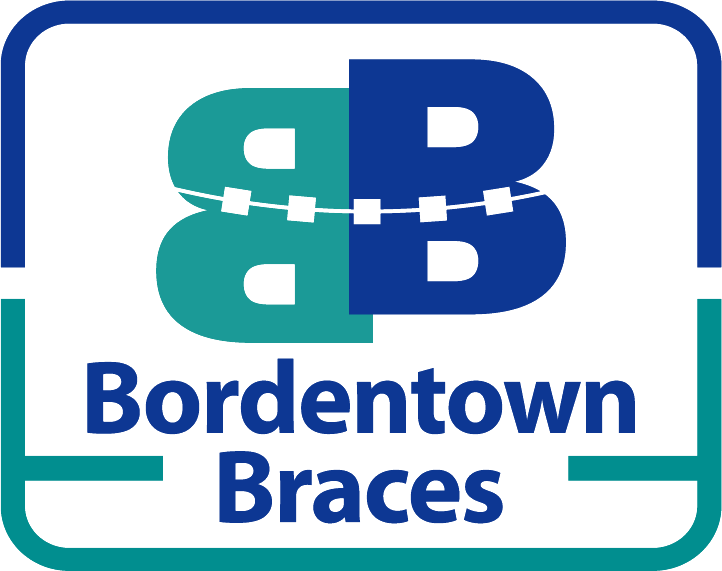
What Is The Right Age For Braces?
Any age is the right age for braces. Although in the past braces were often associated with children and teenagers, at least 1 in 5 modern recipients are adults interested in improving their oral health and wellness. The oral and dental health benefits remain the same no matter how old a patient is, and people can start young or old depending on their orthodontic coverage and when treatment will work well for them.
Of course, there will be different advantages and disadvantages based on a patient’s desired age for braces. Just know that when you visit Bordentown Braces, it is never too late to receive treatment. We have one of the most skilled orthodontists in Trenton, NJ, Dr. Newman, and she is able to help people of all ages.
Child Orthodontics
Many people who struggle with alignment issues develop them as children. Many national dental associations recommend every child be examined by an orthodontist no later than age 7. When someone has a serious misalignment, it is best to treat it as early as possible.
Braces and other forms of orthodontic treatment, such as palate expanders, are the most effective for children. This is because the mouth is more malleable and there is plenty of room for movement and expansion.
Children as young as 7 can wear braces and other forms of dental appliance with little impact on their health, confidence, or social interactions with other kids. However, it is important to consider that kids who do not yet have any adult teeth will struggle with braces. For the best results, parents should wait until their child has some permanent teeth to consider orthodontic care.
Waiting is important so the changes are permanent and not just temporary. For this reason, many parents choose to wait until their kid is at least 9 or 10 before starting braces. Plus, waiting has the added benefit of kids being able to take care of their teeth more on their own.
A potential downside to have orthodontics as a child is that the mouth is subject to change as a person ages, so a child might need to continue to wear appliances through their teenage years to maintain the changes.
Teenager Orthodontics
The majority of the recipients of braces are teenagers between the ages of 12 and 15. At this point in life, patients already have many of their permanent teeth and can experience the numerous benefits of wearing braces or receiving other forms of orthodontic care.
In particular, teenaged patients can receive straighter teeth before they reach graduation, and can significantly reduce their chances of developing serious tooth decay or gum disease. Plus, orthodontics work well with teenagers because they are able to follow more detailed instructions for care. For example, teenagers can brush and floss on their own and have more control over their diets, so they can avoid foods which will affect their appliances.
The downside to having orthodontics as a teenager is this is one of the periods in life when people are the most focused on their personal appearance. Low self-esteem is common, and having to wear orthodontic appliances can have a major effect on confidence.
However, the mouth is pretty set when someone is a teenager while still being malleable enough to accept the changes. So, there are few surprises in store and the patient can expect their results to last.
Adult Orthodontics
Many adults are concerned that they will not be able to receive orthodontic treatment. This is because of the presumption that braces and similar appliances are meant for children and teenagers. However, as mentioned before, 1 out of every 5 orthodontic patients is over the age of 21.
Wearing braces or a palate expander is possible and can be easy to do with the proper care and treatment. While the teeth and palate are more set and permanent, gradual changes can be made when you work with the right orthodontist.
Adults do suffer from some conditions more often than children or teenagers, such as the blood flow of the gums and teeth being restricted during movement. Gingivitis and marginal bone loss can also occur. However, these problems are easy to identify and can be corrected without a problem.
Adult orthodontics is more than just braces and can include in-depth care to correct overbites, underbites, crossbites, and even protruding teeth. Treatment can take 1-3 years, and there are now many different options available to patients, including invisible braces. These help preserve a professional image while an adult patient still receives treatment.
Do Braces Change with Age?
The type of braces a patient can wear does change depending on age. Children, for example, do not typically wear invisible braces because it can be difficult for kids to keep the aligners in. Meanwhile, teenagers and adults are more likely to choose these options because they are invisible to the naked eye and allow them to change their teeth without the discomfort of braces.
The average span of time a patient needs to wear braces remains roughly the same whether the patient is a child, teenager, or adult. You can expect to receive treatment for 1 to 3 years, although children can often finish treatment sooner because their mouths are more malleable.
However, it doesn’t matter what age you are. The best time to receive orthodontic care is sooner rather than later, as orthodontic issues can often worsen as you age. For example, someone who suffers from an overbite can find that their teeth actually start to protrude more or become even more susceptible to decay and breakage over time.
How to Receive Treatment
No matter what age you are, if you are seeking braces or another form of orthodontic treatment, you need to find a skilled orthodontist. If you are looking for an orthodontist in Trenton, NJ, contact us today at Bordentown Braces. We can treat patients of all ages and backgrounds and help you feel proud of the smile you see in the mirror.
